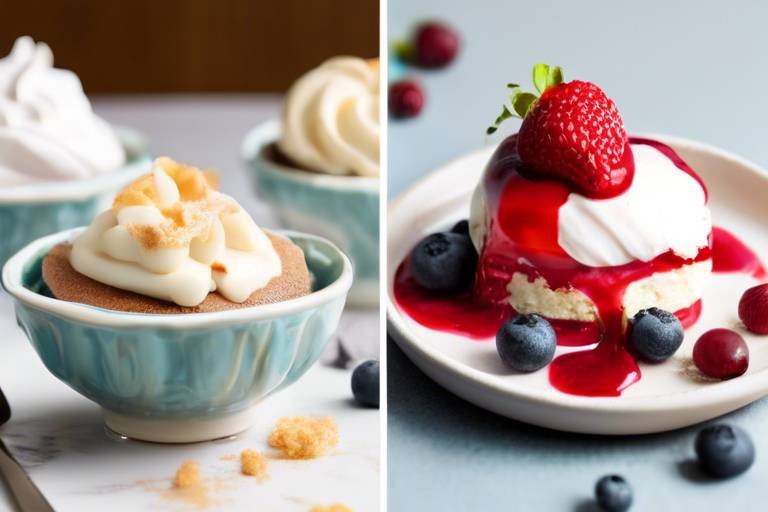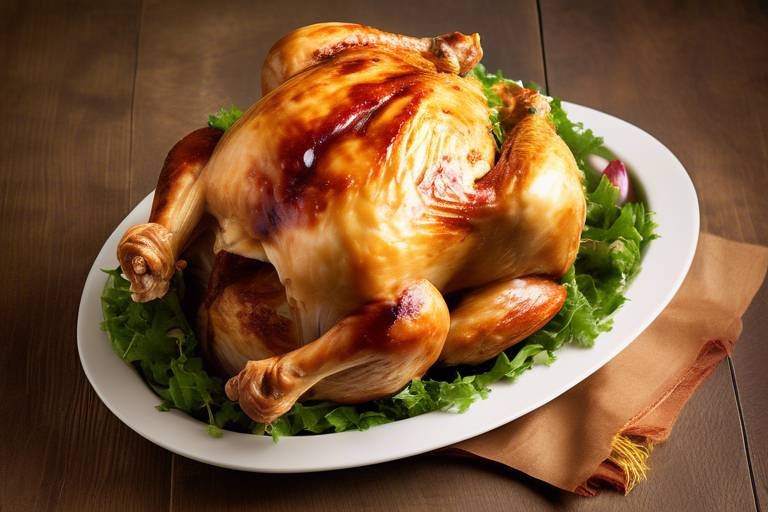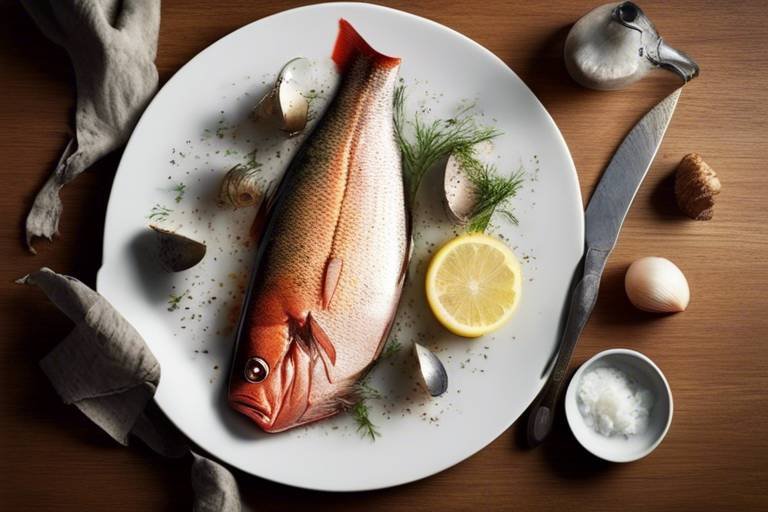How to Cook Perfectly Poached Eggs - Tips and Tricks
Are you ready to elevate your breakfast game with perfectly poached eggs? Mastering the art of poaching eggs can seem daunting, but with the right tips and tricks, you'll be creating flawless poached eggs every time. Let's dive into the secrets of achieving the ideal texture and taste for your poached eggs.

Choosing the Freshest Eggs
Learn the art of poaching eggs to perfection with these expert tips and tricks that will help you achieve the ideal texture and taste every time you cook poached eggs.
Selecting fresh eggs is crucial for poaching success as the whites will hold together better, resulting in a neater appearance and better texture for your poached eggs. When choosing eggs, look for ones with firm yolks and thick whites. Fresh eggs will have a rounded yolk that sits high and doesn't break easily. Check the expiration date on the carton and ensure there are no cracks in the shells, as this can affect the outcome of your poached eggs.
Master the art of poaching eggs by understanding the right temperature, swirling the water, and adding vinegar to create the perfect environment for a beautifully poached egg. The water temperature should be around 180-190°F, and adding a splash of vinegar helps the egg whites coagulate faster. Swirling the water gently before adding the egg can help create a uniform shape.
Achieving the ideal poached egg consistency requires precise timing. Discover the optimal cooking times for soft, medium, and hard-poached eggs to suit your preferences perfectly. Soft-poached eggs typically take about 2-3 minutes, while medium-poached eggs need around 4-5 minutes, and hard-poached eggs require 6-7 minutes. Adjust the timing based on the size of the eggs and your desired yolk consistency.
Elevate the taste of your poached eggs by experimenting with different seasonings such as salt, pepper, herbs, and spices to create a dish that suits your palate. Try adding a sprinkle of smoked paprika, a dash of hot sauce, or a drizzle of truffle oil to add depth of flavor to your poached eggs.
Explore various ingredients and dishes that pair well with poached eggs, including avocado, smoked salmon, toast, salads, and hollandaise sauce for a delightful culinary experience. Create a balanced meal by combining poached eggs with fresh vegetables, grains, and proteins to enjoy a satisfying and nutritious dish.
Learn presentation tips and tricks to make your poached eggs visually appealing, whether you are serving them on their own or incorporating them into a dish like eggs Benedict or a breakfast bowl. Garnish your poached eggs with fresh herbs, a sprinkle of sea salt, or a drizzle of olive oil to enhance their visual appeal and make them irresistible.
Discover alternative techniques for poaching eggs, such as using a microwave, silicone poaching pods, or a sous vide machine, to achieve consistent and delicious results with ease. Experiment with different methods to find the one that works best for you and fits your cooking style.
Identify and troubleshoot common mistakes made when poaching eggs, such as feathering, overcooking, or undercooking, to improve your poaching skills and create perfect eggs every time. Adjust the cooking time, water temperature, and swirling technique to overcome challenges and master the art of poaching eggs.
Stay tuned for some common questions and answers about poaching eggs to enhance your knowledge and cooking skills.

Perfecting the Poaching Technique
When it comes to perfecting the art of poaching eggs, attention to detail is key. The first step is to bring a pot of water to a gentle simmer, not a rolling boil. Adding a splash of vinegar to the water helps the egg whites coagulate faster, ensuring a neater shape. Swirling the water gently before adding the egg can help create a vortex that wraps the egg whites around the yolk, resulting in a more uniform shape.
Timing is crucial in achieving the desired consistency of a poached egg. For a soft-poached egg with a runny yolk, aim for about 3 minutes of cooking time. A medium-poached egg, with a slightly firmer yolk, may require around 4-5 minutes. If you prefer a hard-poached egg with a fully set yolk, let it cook for 6-7 minutes. Experimenting with different timings will help you find the perfect doneness that suits your taste.
For those who find traditional poaching methods challenging, there are alternative techniques to explore. Using a microwave-safe dish with water, cracking an egg into it, and covering it can result in a quick and easy poached egg. Silicone poaching pods offer a convenient way to shape the eggs while cooking. Additionally, a sous vide machine provides precise temperature control for consistent poached eggs every time.
To ensure your poached eggs turn out perfectly every time, avoid common mistakes such as using old eggs, overcrowding the pot, or letting the water boil vigorously. By mastering the poaching technique and paying attention to details, you can elevate your breakfast game and impress your guests with beautifully poached eggs.

Timing Is Key
Timing is crucial when it comes to poaching eggs to perfection. The difference between a soft, runny yolk and a firm one lies in the precise timing of the cooking process. For a soft-poached egg with a velvety yolk that oozes out when cut into, aim for about 3 minutes of cooking time. If you prefer a medium-poached egg with a slightly thicker yolk, extend the cooking time to around 4-5 minutes. For those who enjoy a hard-poached egg with a fully set yolk, let it cook for approximately 6-7 minutes. Mastering the timing will allow you to achieve your desired egg consistency every time.

Enhancing Flavor with Seasonings
Enhancing the flavor of poached eggs with seasonings is a delightful way to elevate this classic dish. By experimenting with different seasonings, you can create a unique flavor profile that suits your taste preferences perfectly. Common seasonings to consider include salt, pepper, herbs like chives or dill, and spices such as paprika or cayenne pepper. These additions not only enhance the taste of the eggs but also add depth and complexity to the overall dish.
When it comes to seasoning poached eggs, the key is to strike a balance between enhancing the natural flavor of the eggs and complementing them with additional tastes. For a simple yet delicious option, a sprinkle of salt and pepper can go a long way in bringing out the richness of the eggs. If you're feeling more adventurous, consider adding fresh herbs like parsley or tarragon for a burst of freshness.
For those who enjoy a bit of heat, a dash of hot sauce or a pinch of chili flakes can add a spicy kick to your poached eggs. Experimenting with different seasonings allows you to customize the dish to your liking, creating a personalized culinary experience every time you cook poached eggs.

Pairing Poached Eggs with Complementary Ingredients
Pairing poached eggs with complementary ingredients opens up a world of culinary possibilities, allowing you to create delicious and satisfying dishes. One classic pairing is poached eggs with avocado, where the creamy texture of the avocado complements the soft yolk of the egg perfectly. Another popular combination is poached eggs with smoked salmon, offering a luxurious and indulgent flavor profile that is perfect for special occasions.
For a simple yet satisfying meal, consider serving poached eggs on toast. The runny yolk of the egg adds richness to the toast, creating a comforting and hearty dish. Poached eggs also make a great addition to salads, adding protein and flavor to fresh greens and vegetables. Additionally, pairing poached eggs with hollandaise sauce creates a classic eggs Benedict dish that is sure to impress brunch guests.
When it comes to pairing poached eggs with complementary ingredients, the key is to balance flavors and textures. Experiment with different combinations to find what works best for your palate and enjoy the versatility of this versatile egg preparation method.

Creating Picture-Perfect Poached Eggs
Creating picture-perfect poached eggs is an art that goes beyond just cooking them right. The visual appeal of a perfectly poached egg can elevate the entire dining experience. To achieve this, presentation is key. One way to enhance the visual aspect is by ensuring the egg is cooked to the ideal consistency - with a runny yolk and firm white. This contrast not only looks appealing but also adds to the overall texture of the dish.
Another aspect to consider is the serving vessel. Plating your poached eggs on a simple, elegant dish can make them stand out. You can also experiment with garnishes such as fresh herbs, microgreens, or a sprinkle of paprika to add color and visual interest. Remember, people eat with their eyes first, so a visually appealing dish can make the meal more enjoyable.
Furthermore, paying attention to details like the shape of the poached egg can make a difference. Using a slotted spoon to shape the egg as it cooks can help create a more uniform and aesthetically pleasing appearance. Additionally, ensuring that there are no stray bits of egg white floating in the poaching water can contribute to a cleaner presentation.
Lastly, consider the overall composition of the dish. Pairing your poached eggs with complementary ingredients that not only enhance the flavor but also add visual appeal can take your dish to the next level. Whether it's a vibrant green avocado, a pop of color from a perfectly ripe tomato, or the rich orange hue of smoked salmon, thoughtful ingredient pairing can make your poached eggs visually stunning.

Alternative Poaching Methods
When it comes to poaching eggs, there are alternative methods that can help you achieve consistent and delicious results with ease. One popular alternative is using a microwave for poaching eggs, which can be a quick and convenient option for busy mornings. By cracking an egg into a microwave-safe dish with a little water and covering it with a lid, you can cook a perfectly poached egg in just a few minutes.
Another method to consider is using silicone poaching pods, which are specially designed to create the ideal environment for poaching eggs. Simply place the pod in a pot of simmering water, crack an egg into it, and let it cook until the whites are set but the yolk is still runny. This method ensures consistent results and easy cleanup.
For those who enjoy using modern kitchen gadgets, a sous vide machine can also be used for poaching eggs. By placing the eggs in a vacuum-sealed bag and cooking them in a water bath at a precise temperature, you can achieve perfectly poached eggs with a silky texture every time.

Fixing Common Poaching Mistakes
When it comes to poaching eggs, common mistakes can often derail your efforts to achieve the perfect result. One of the most common issues encountered is feathering, where the egg whites spread out in the water instead of holding together. This can be prevented by ensuring the water is at the right temperature and gently cracking the egg close to the surface to avoid excessive spreading.
Another prevalent mistake is overcooking or undercooking the eggs, resulting in a less-than-ideal texture. To fix this, it's crucial to time the cooking process accurately based on whether you prefer a soft, medium, or hard-poached egg. Experimenting with different cooking times will help you find the perfect balance to suit your taste.
Furthermore, the freshness of the eggs plays a significant role in the poaching process. Using older eggs can lead to whites that are more watery and less likely to hold their shape. Always opt for fresh eggs to ensure a neater appearance and better texture when poaching.
If you find that your poached eggs are turning out misshapen or uneven, try swirling the water gently before adding the eggs. This motion helps the whites wrap around the yolk more evenly, resulting in a nicely formed poached egg.
Lastly, if you notice any bits of shell in the poaching water, use a slotted spoon to remove them carefully. Any shell fragments can disrupt the poaching process and affect the final presentation of your eggs.
Frequently Asked Questions
- What is the best way to select fresh eggs for poaching?
Choosing fresh eggs is essential for successful poaching. Look for eggs with firm whites and yolks that sit high in the shell, indicating freshness. Using fresh eggs will result in a neater appearance and better texture for your poached eggs.
- How can I prevent my poached eggs from falling apart?
To prevent poached eggs from falling apart, make sure the water is at a gentle simmer, not a rolling boil. Adding a splash of vinegar to the water can help the egg white coagulate faster and hold its shape. Also, avoid overcrowding the pot to give each egg enough space to cook properly.
- What is the ideal cooking time for soft, medium, and hard-poached eggs?
The cooking time for poached eggs varies depending on the desired consistency. For soft-poached eggs, cook for about 2-3 minutes, medium-poached eggs for 4-5 minutes, and hard-poached eggs for 6-7 minutes. Adjust the timing based on your preference for yolk consistency.
- Can I experiment with different seasonings for my poached eggs?
Absolutely! Seasonings like salt, pepper, herbs, and spices can enhance the flavor of your poached eggs. Feel free to experiment with different combinations to create a dish that suits your taste buds. Just remember to season the eggs after they are cooked to avoid affecting the poaching process.
- What are some common mistakes to avoid when poaching eggs?
Common poaching mistakes include using eggs that are not fresh, boiling the water too vigorously, not swirling the water properly, or overcooking the eggs. By following the tips and techniques provided, you can troubleshoot these issues and improve your poaching skills.



















